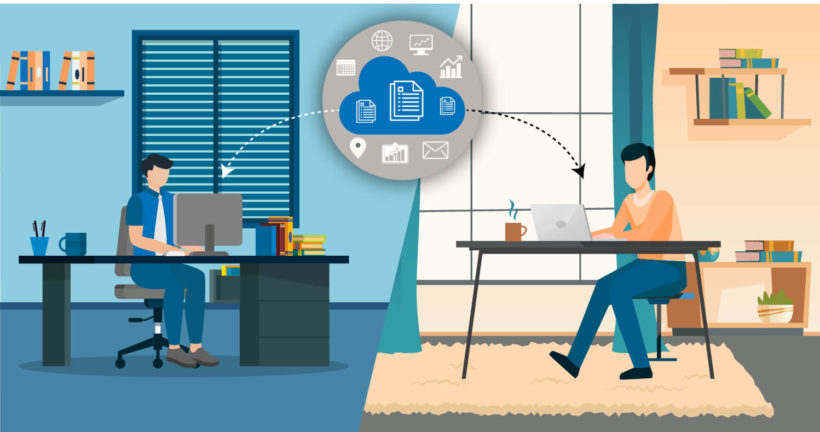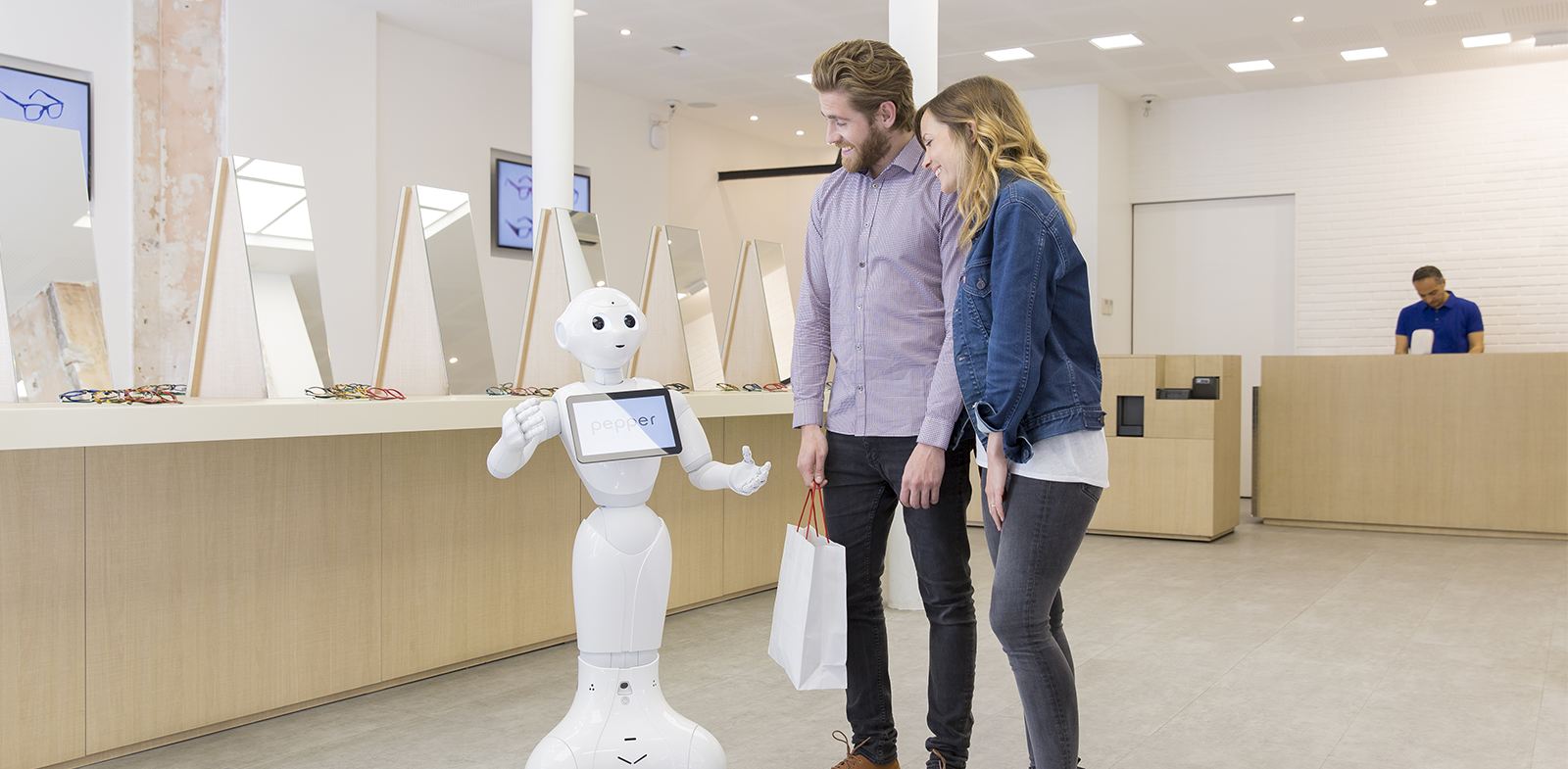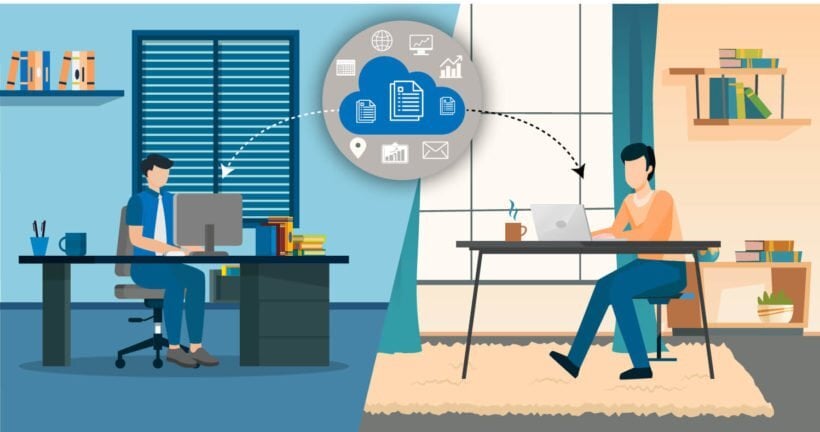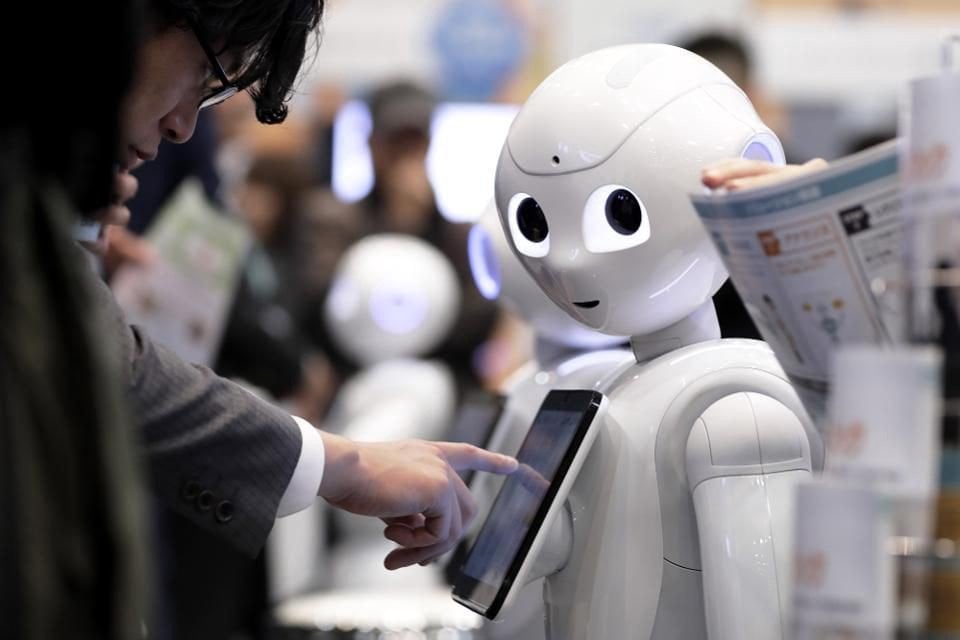What Role Will Robots Play in Hybrid Work?
Oct 20, 2021
By Evelyn Long

The effect of the COVID-19 pandemic on the work environment was like nothing seen before in history. The anticipated future where many people were working remotely suddenly became a present reality for millions. As some companies begin opening their office doors again, the shift to hybrid work is becoming an experiment in the future of work.
Office spaces are in a bit of an awkward state during this shift, though; there are fewer people in the office, office days and hours are irregular, and employees long for the customization of their home office spaces. Could robots help create a new kind of workplace, connected between offices and remote employees and optimized for flexibility?
The answer lies in three central areas where robots are likely to play an important role in the new mainstream hybrid workplace.
Connecting the Office and the Home
Ironically, communication was in some ways easier during the pandemic, when everyone was working remotely than it has been for hybrid teams. When everyone was remote, the playing field was essentially level: team members joined a Zoom meeting from their home workspaces and everyone showed up in little rectangles around the screen. In the office, everyone reported to the same meeting room, where they all got an equal slice of the table.
In a hybrid office, concerns have come up about how to keep remote team members equally involved during meetings taking place simultaneously in the physical office. Robots and AI can be used to create immersive remote working experiences that will alleviate these issues.
For example, some companies have added more screens in meeting rooms, along with 360-degree cameras, allowing remote employees to be both physically present in the room and see everyone at the table as if they were really there. This could be taken a step further by using a robotic camera that swiveled to focus on whoever was speaking, the same way that someone in person would turn their head to look at their colleagues during a meeting.
Creating an Adaptable Workspace
The office is going to fundamentally change with the rise of hybrid work. It is important to keep in mind that hybrid work doesn’t just mean some people work from home and some people work from the office.
It can also mean employees work from wherever they want to throughout the day and the week. They might want to come into the office for a few hours, a few days, or not at all. The office of the future has to be adaptable and flexible to accommodate this.
There are a few ways that robots can help in this new office space. For example, Google has developed a robot that can be directed around their open offices to put up an inflatable room divider whenever privacy is needed. They have also begun using robotic desks that could become commonplace in offices one day.
One of the realities of hybrid work is that there are fewer people in the office at one time, so it is no longer necessary for every employee to have their own desk. What Google has done instead is create desks that will automatically customize themselves according to any employee’s needs with the simple scan of a badge. It will even display family photos and adjust monitor angles.
Features like this in the office are purpose-built for flexibility and encourage employees to work wherever and whenever they feel they will be most productive. This mindset is the core of what makes hybrid work so valuable: it is exceptionally versatile and adaptable.
Protecting Data Everywhere
A major concern when any number of employees are working remotely is cybersecurity. Reports from INTERPOL make it clear that cyberattacks increased significantly during the COVID-19 pandemic. It is suspected that this increase is due at least in part to the weaker security of employees’ home internet connections and computer software. Remote work is not going away anytime soon, so businesses will need to prioritize developing robust cybersecurity measures for remote workers. Robots and AI can help with this.
With the help of machine learning, AI can detect malicious emails and content before they can harm employees’ computers or data. AI is great for automation, so this program could be running continuously, constantly scanning everything that comes and goes around the business’s network.
Additionally, AI algorithms can be used for catching potential data breach risks in company systems. Whether this means assessing which employees need additional cybersecurity tools or vulnerabilities in the company website, AI can help.
In a hybrid work environment, the office’s Wi-Fi protections are no longer enough. Robotic systems can help ensure cybersecurity measures are adaptable and effective, even spread out among employees’ personal computers.
Robots and the Future of Hybrid Work
Prior to the COVID-19 pandemic, the term “hybrid workspace” was used to describe humans and robots working together. While its popular meaning has changed, the sentiment of humans and robots collaborating remains. The future of work includes both skilled, knowledgeable people and efficient, helpful robots and AI, just as it includes work inside and outside the traditional office.
Discover more about Business and Robots with RobotLAB!

About the author
Evelyn Long is the editor-in-chief of Renovated and a writer with experience covering green technology and construction for publishers like NCCER and BUILD.










 Too much to read? Don't have time?
Too much to read? Don't have time? 

.webp?width=124&height=124&name=image%20(1).webp)
.webp?width=169&height=87&name=image%20(2).webp)













